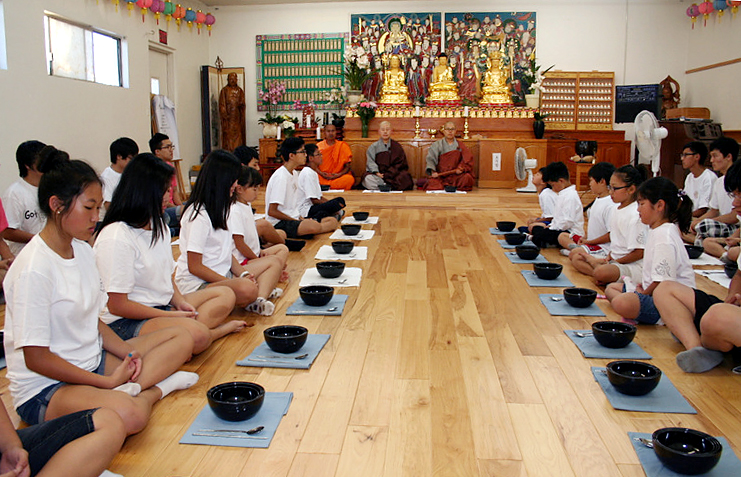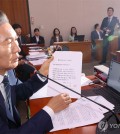- California Assembly OKs highest minimum wage in nation
- S. Korea unveils first graphic cigarette warnings
- US joins with South Korea, Japan in bid to deter North Korea
- LPGA golfer Chun In-gee finally back in action
- S. Korea won’t be top seed in final World Cup qualification round
- US men’s soccer misses 2nd straight Olympics
- US back on track in qualifying with 4-0 win over Guatemala
- High-intensity workout injuries spawn cottage industry
- CDC expands range of Zika mosquitoes into parts of Northeast
- Who knew? ‘The Walking Dead’ is helping families connect
Temple stay participants increased last year despite outbreak of MERS

FILE — Temple stay is not only getting popular in South Korea, but in Southern California also. In this 2014 photo, students are gathering their thoughts before a meal at the Junghyesa’s temple stay in Orange County, Calif. (Korea Times file)
SEOUL (Yonhap) — The number of locals and foreigners who participated in Buddhist temple stay programs increased noticeably last year despite the outbreak of Middle East Respiratory Syndrome (MERS), a local culture promotion team said Friday.
According to the Cultural Corps of Korean Buddhism, a total of 219,000 people participated in the Buddhist tour program last year, which marks a 13.5 percent increase from the previous year’s 193,000.
Locals added up to 187,000, while foreign participants numbered 32,000. This represents a growth of 12 percent and 27 percent, respectively, from the previous year.
South Korea’s temple stays are organized and run by the cultural corps, which belongs to the Jogye Order, the largest Buddhist sect in the country.
Of all foreign participants, U.S. citizens accounted for 22 percent, followed by Chinese nationals who made up 15 percent. Vietnamese and Japanese participants made up 13 and 6 percent of the total each, while 5 percent were French.
The number of participants in temple stays decreased in June last year due to the outbreak of MERS, but the numbers were up twofold compared to the year before in May and October. The surge was boosted by an aggressive tourism promotion campaign, an organizing official said.
The official said the number of foreigners surpassed the 30,000 mark for the first time since the program was launched in 2002, claiming that the temple stay program has now become an established form of mental and spiritual healing in the country.
As to the survey of participant satisfaction, he said people gave an average score of 4.32 out of 5, which is comparable to 4.2 the previous year.
The corps conducted a survey of selected participants who stayed at the nation’s 113 Buddhist temples from December 2014 to November last year through the Web site templestay.com.
Temple stay programs have become increasingly popular among foreign tourists and local residents. The number of Buddhist temples that operated temple stays totaled 122 last year.















